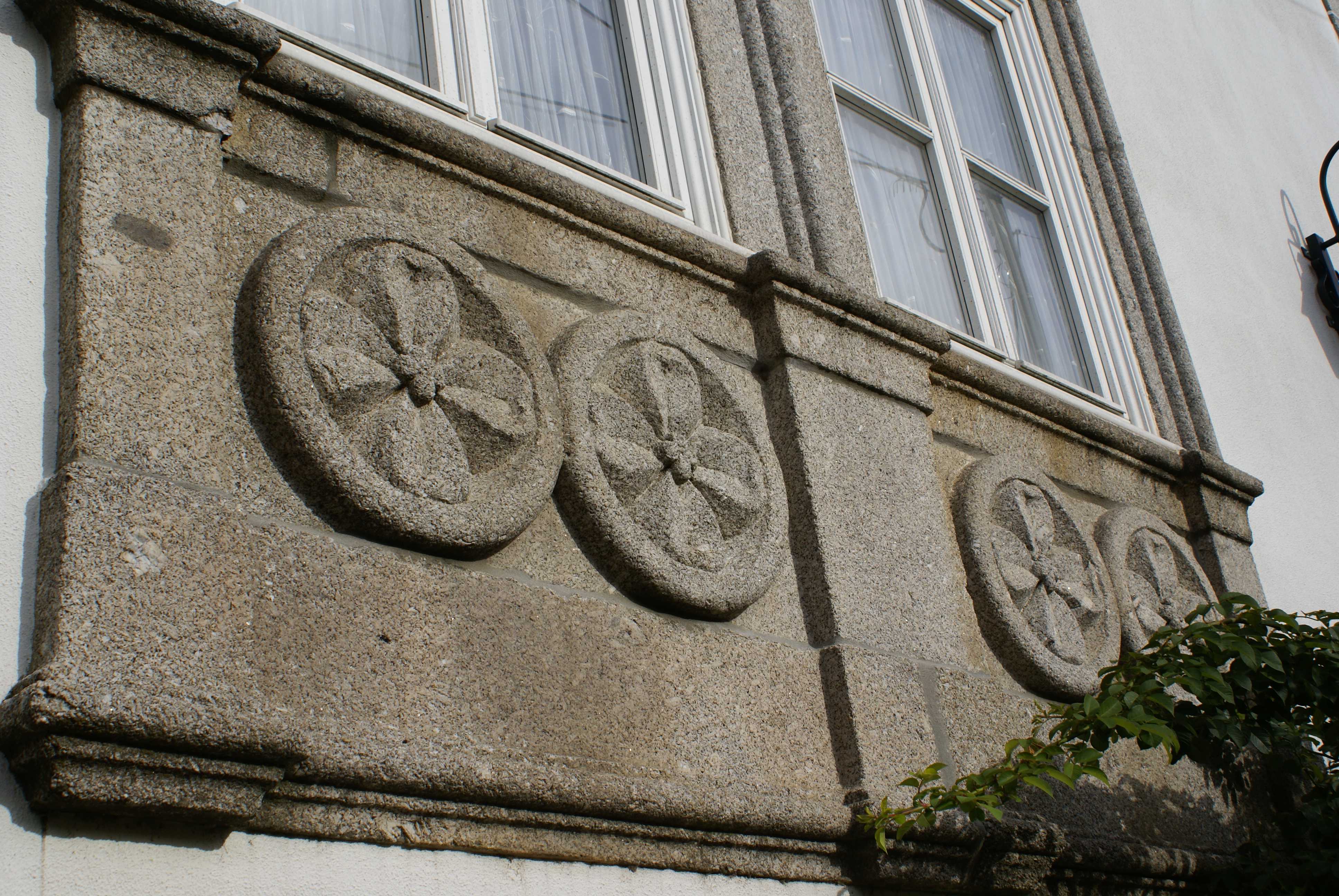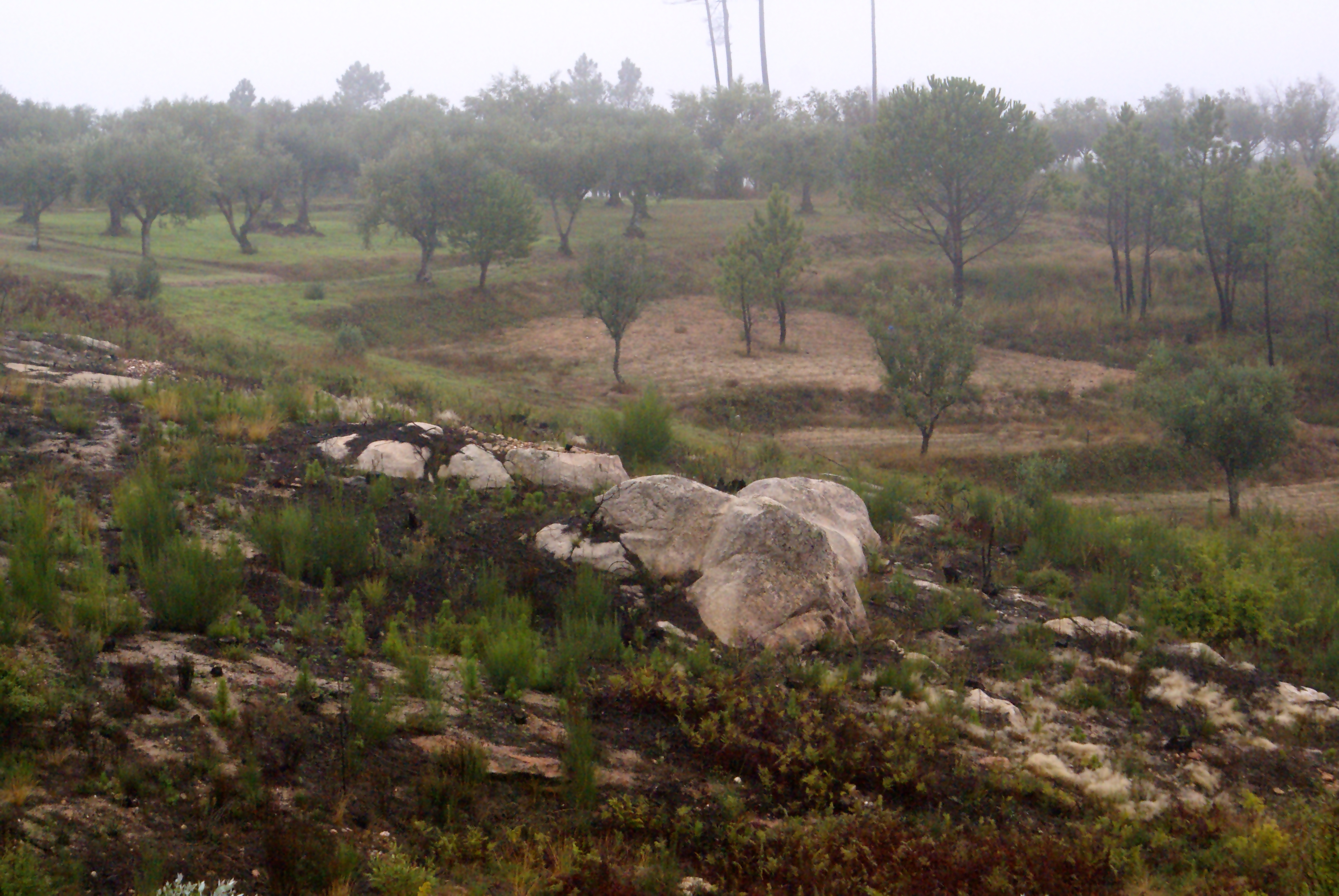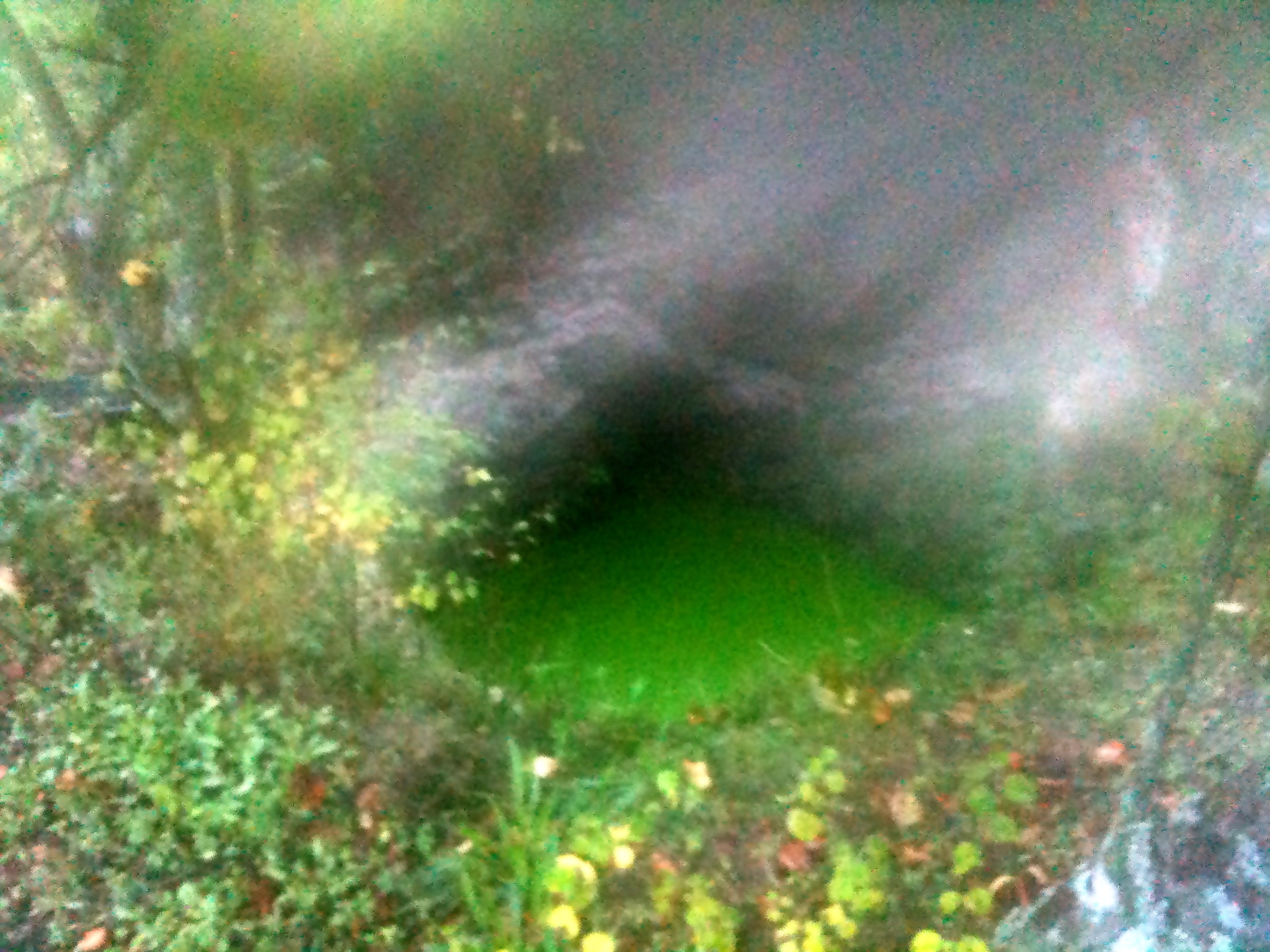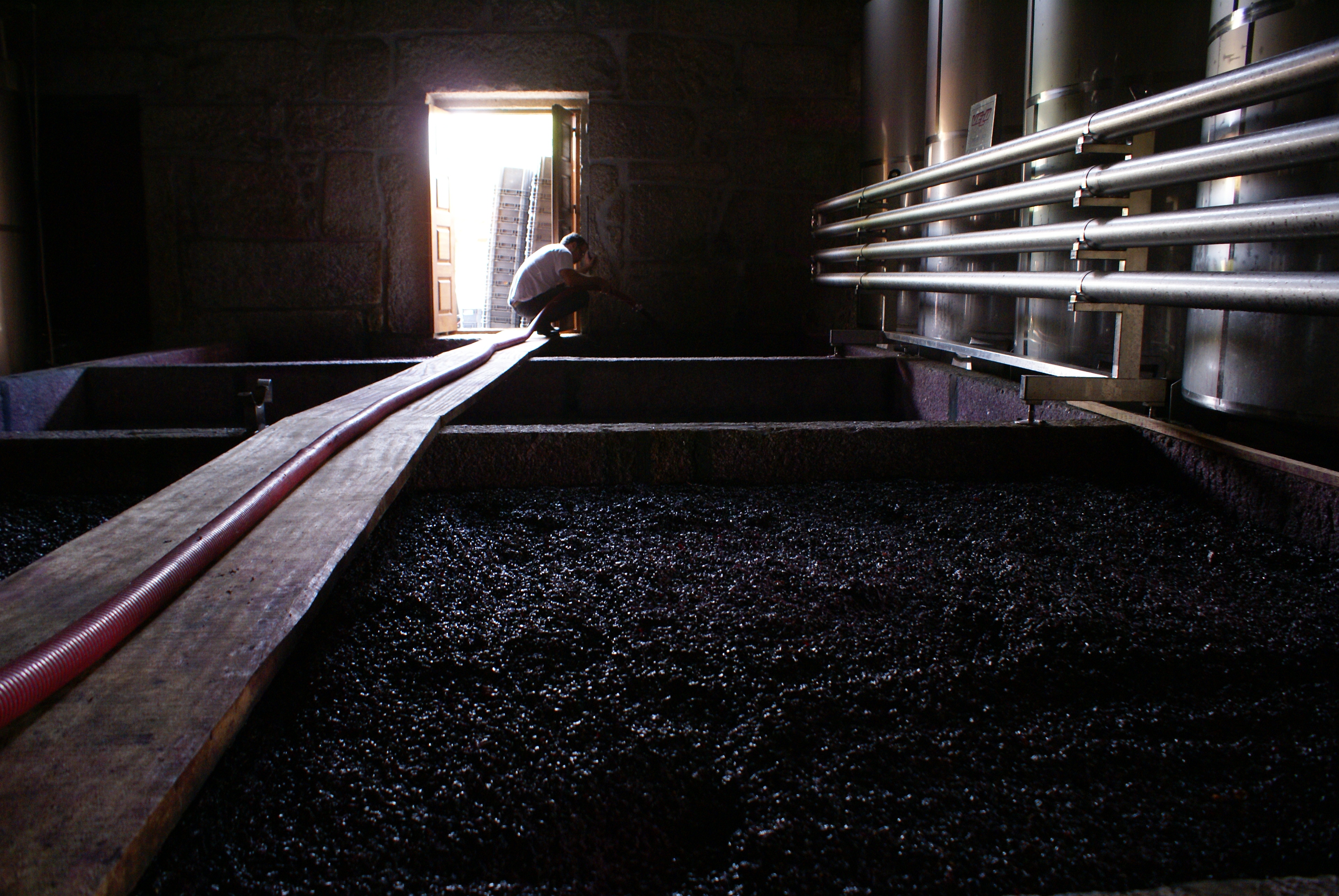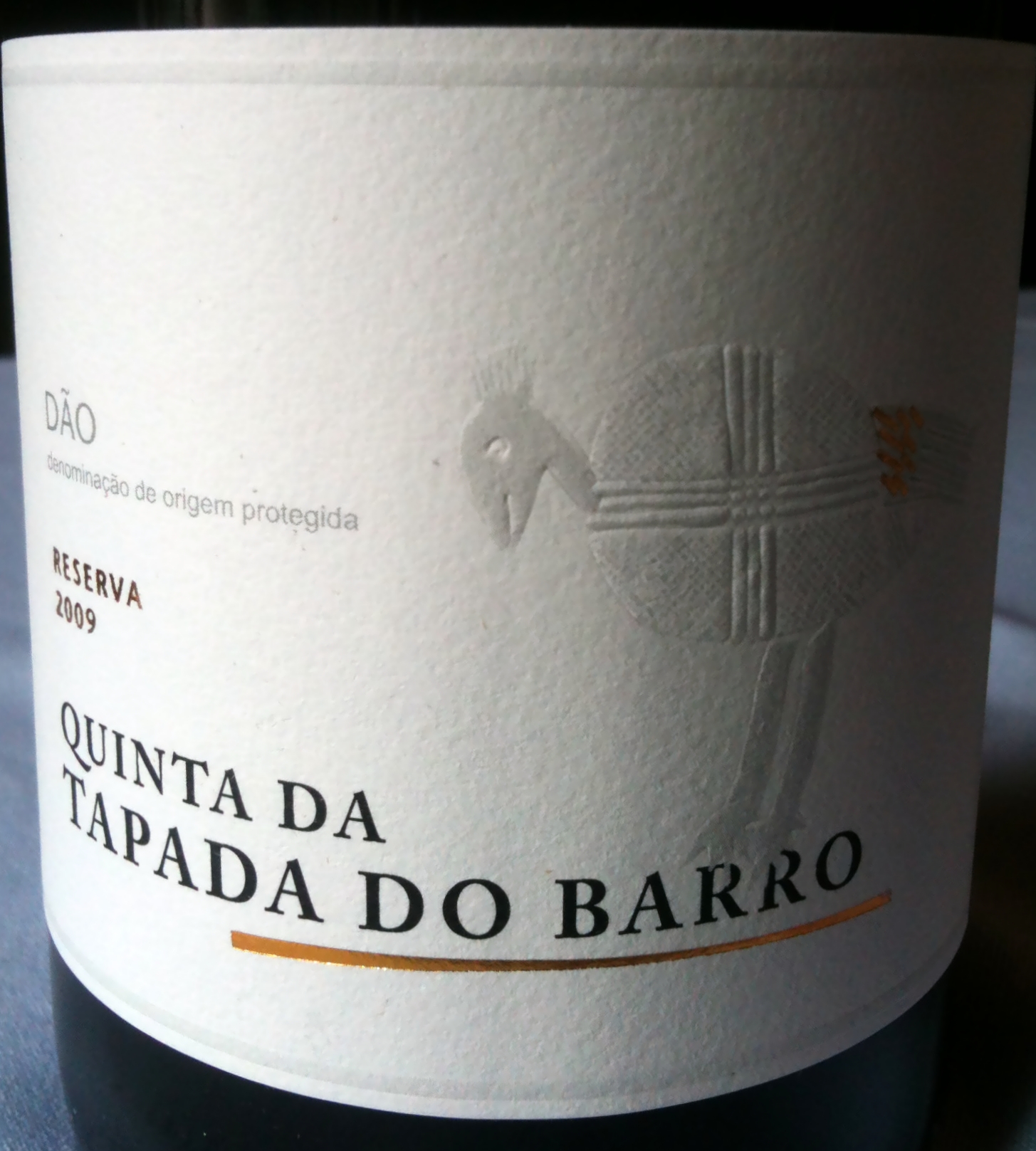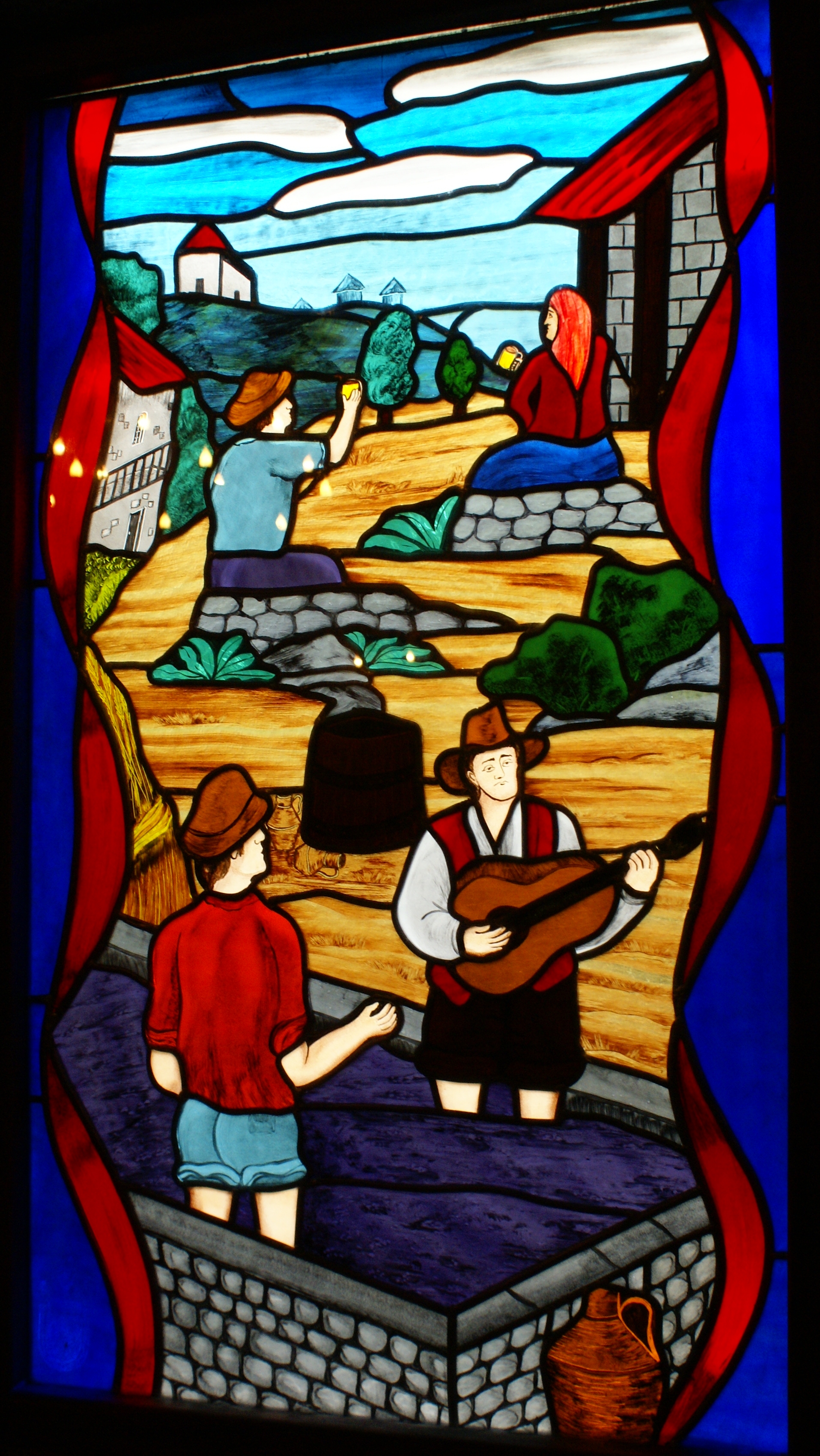Exploring Dão
Posted on 25 October 2012
So my next visit in Portugal after the nice sandy beaches of Comporta was Dão. It is the name of a wine region located in central Portugal, in a broader region called Beiras (which encompasses another important wine appellation, Bairrada). Now you might think of Portugal as a warm sub-tropical wine country, but Dão is definitely a cool place and it has a very continental feel. First of all it is located near the Serra da Estrela mountains. You can see its 2000-meter peaks from any vineyard in Dão. In the winter, there is quite some snow.
The second important thing about Dão is water. There is plenty of it. Alentejo in the south or Douro in the north might be arid places where irrigation is often necessary in the vineyards, but Dão has very Atlantic weather with mists, showers, and regular thunderstorms. The third thing to remember about Dão is granite. Everything here is made from granite stones, including houses, churches, bridges, vineyard poles, and garden benches, and granite dominates the vineyard soil throughout the region.
The granite gives poise and freshness to the wines, which have an interesting style. The whites are mineral, vibrant and aromatic. The reds are crisp, tannic, and taste more of the Loire valley than anything stereotypically Portuguese. They age well, they go well with hefty foods such as roast piglet or fried sausages (especially the local alheira, which resembles rillettes) or even wild boar. Dão wines are like a whiff of the north amidst a sea of Mediterranean-style red.
There are four main grapes here: Touriga Nacional, Portugal’s deepest and most ambitious grape, said to originate from Dão; Tempranillo, locally called Tinta Roriz, which adds fruit and spice; Jaén (theoretically the same as Spain’s Mencía) adding acid and structure; and the local Alfrocheiro which is a paler, Pinot Noir-like grape. The whites (30% of regional production) mostly derive from Malvasia Fina, Bical, Cerceal, and Encruzado, the latter being by far the most interesting (think Viognier with added acid and minerality).
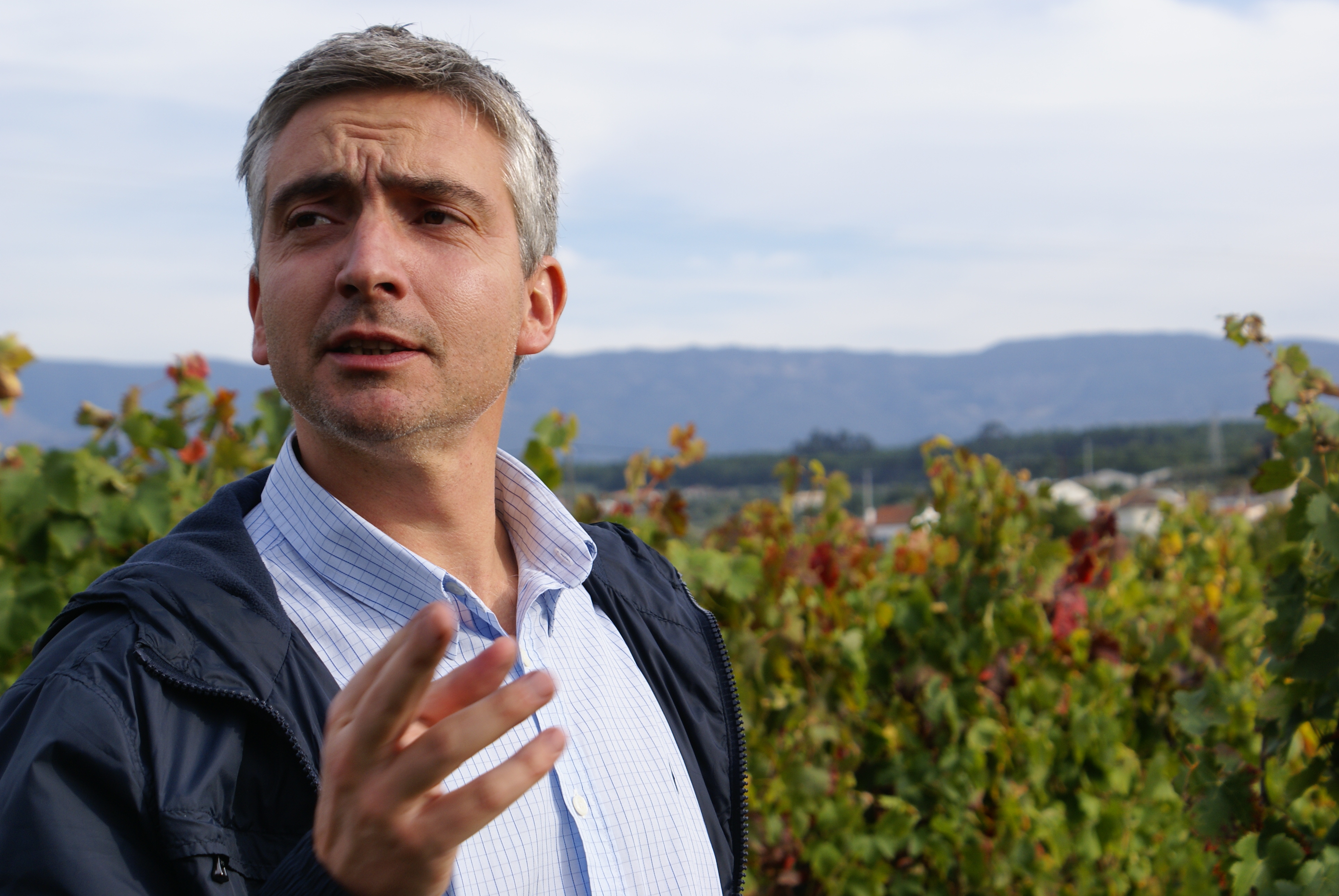
Pedro Pereira is the winemaker of Pai Américo, Tapada do Barro, as well as the Vila Nova de Tazém coop.
Together with my cicerone Rui Lourenço Pereira from the Quinta Wine Guide, we spent the first afternoon in Dão visit Pái Américo, a medium-sized quinta (wine estate) that mostly exports to America. The winemaker here is Pedro Pereira, who also vinifies at the Vila Nova de Tazém co-op (tasted on other occasions, it is a reliable producer of everyday wines). We tasted a decent 2011 Américo white, based on Encruzado, still tight and smokey with good minerality but a little edgy at this stage (at 5.50€ it is good value, as I would discover most Dão wines to be), followed by an attractive red 2011 Monte Serra at an unbeatable 2.50€ on the shelf. Getting more serious, the 2008 Américo and 2009 Américo Escolha were meaty and concentrated with plenty of spice but somewhat vague and lacking focus. I felt there was a clear change for the better in the winemaking here starting in 2010, because the 2010 Américo and 2010 Reserva were on a different level with good personality and much better quality tannins; the latter is a serious offering at ~12€ retail.
Pedro Pereira also makes the wines at another estate, Quinta da Tapada do Barro. There are only 8 hectares here with 50K bottles exported to Belgium and Congo where the owner, António Silva Viana lives. I thought the 2010 Tinto was a solid wine with spice and earthiness on the nose and a moment of sweet fruit at mid-palate; with riper acidity it is rounder and richer than the Américo offerings. The 2009 Reserva was representative of more ambitious Dão wines, concentrated with some tannic extract and with a characteristic bitter cocoa pod savouriness on the finish. It can age for 5 or 6 years. It was a good start to our stay, whetting my appetite for the following day when we made no fewer than 7 winery visits.
Disclosure
My trip to Portugal including flights, accommodation and wine tasting programme is sponsored by Quinta Wine Guide.


